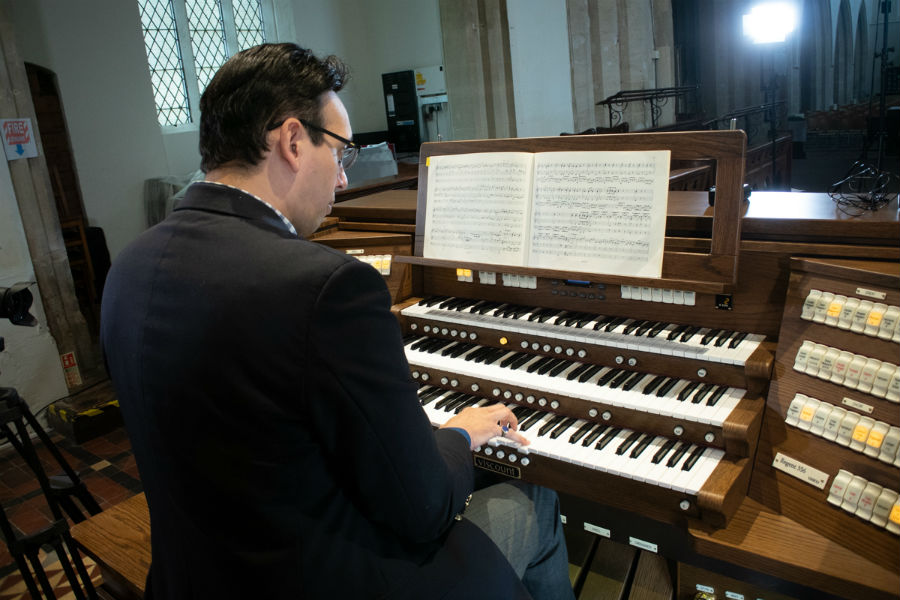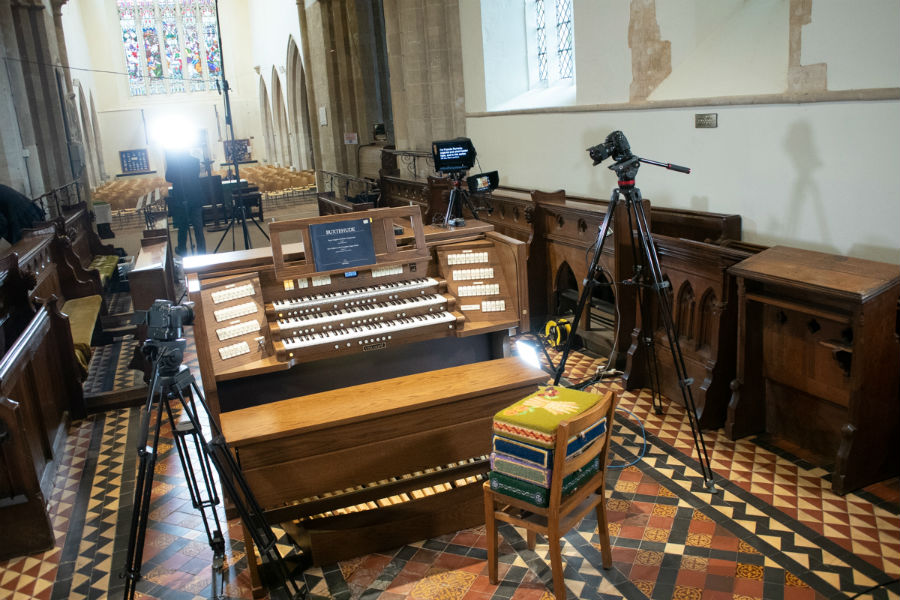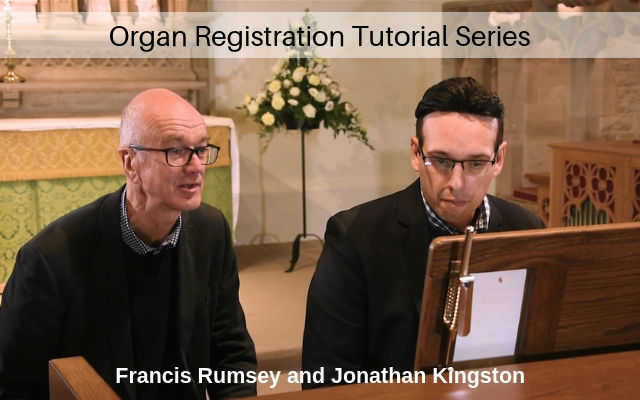In the Organ Registration Tutorial Series Francis Rumsey and Jonathan Kingston discuss and demonstrate approaches to registration for distinctive genres and styles of organ music.
The aim is to give you some ideas about stop combinations that might be appropriate, and tips about handling some of the organ management challenges. As will always be the case, the final decision about what to do is always down to the individual player. While there are almost no unbreakable rules there are certainly performance traditions to be taken into account. There are boundaries of “good taste”, things that really don’t work, and (more rarely) specific directions by the composer.
Overview of the Organ Registration Tutorial Series
We’ve chosen five topics to discuss in this 2019 series. These tutorials will be released every other month during the year on our blog so make sure to subscribe to our newsletter to not miss any of them.
- For the first tutorial in this series, we’ve chosen to discuss organ registration in two contrasting chorale preludes by J. S. Bach.
- The second considers how to deal with the different sections of a big North German school work in the stylus phantasticus. We look at organ registration for Buxtehude’s big G minor Praeludium.
- During the third, Francis and Jonathan discuss examples of how to handle a perennial challenge in organ performance. That of rendering extended crescendo and decrescendo passages while minimising obvious steps in loudness and timbre. We do this with the aid of a Psalm Prelude by Herbert Howells.
- Our fourth organ tutorial spends time with Franck’s Chorale in A minor. We consider how to register the different sections of this well-known work for authentic effect.
- Finally, the fifth tutorial takes you on a tour of some widely used hymn tunes. A number of our viewers have requested more information about dealing with hymn accompaniment. Therefore we’ve encouraged Jonathan to impart his wisdom on things like play overs, word painting and last verses.

Recording the video series at St Mary’s in Witney
We recorded our 2019 tutorials in the beautiful chancel of St Mary’s, Witney, home to a Regent Classic custom-built organ. In this series Jonathan plays a Viscount Regent 356 instrument, which is based on the company’s renowned and sonically convincing Physis technology. 56 stops are disposed over three manuals and pedals, enabling the authentic performance of a very wide range of organ literature.
This organ was voiced specifically for the permanent installation in this building. It takes into account the church’s acoustics and the need to support both liturgical accompaniment and the performance of an eclectic repertoire.

Organ Registration Tutorial on Vimeo and YouTube
All the Organ Registration Tutorial videos can be found on both Vimeo and YouTube. Make sure to subscribe to our channels so you don’t miss out when we release new videos.
YouTube Organ Registration Tutorial Playlist:
Vimeo Tutorial Buxtehude Praeludium in G minor:
I have had a passion for church organs since the tender age of 12. I own and run Viscount Organs with a close attention to the detail that musicians appreciate; and a clear understanding of the benefits of digital technology and keeping to the traditional and emotional elements of organ playing.




I am especially interested in learning how to properly play hymns and other church music in a small 100 year old church in Idaho. We have a newly acquired Viscount Classic 350 organ. (Midi Pedals)
I have previously only played Hammond organs here in the U.S. so this is a new experience. We also need advice about having someone here between Spokane, WA and Couer D’ Alene, Idaho come to tune and service it. Do you have any U.S. contacts? Thanks for your assistance.